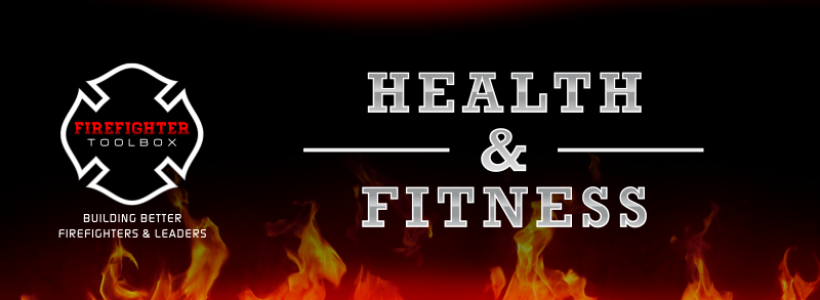4 Smart Tools For A Firefighter’s Good Health
On scene, a smart firefighter never goes into a situation without his or her proper tools. But why don’t we do that when it comes to our health? There are countless tools around us to assist us in maintaining or obtaining good health.
Shouldn’t we be using them? A healthy lifestyle of eating well, maintaining a healthy weight, exercise, and getting a good night’s sleep can all contribute to our well-being. It is up to us to pick up the right tools to get this job done.
#1 – Get A Check-Up
Yearly physicals involve many tools that assess the state of our present health. Two of these are blood work and stress tests. The check-up may involve a stress test for the heart. During the stress, you are hooked up with ECG electrodes and you move on a treadmill for a certain length of time. Vital signs are assessed before, during, and after the test to assure you are meeting the specified criteria.
The physical also typically includes a complete panel of blood work to check your cholesterol and blood glucose levels, to name just a few. This gives us an overview of how healthy we are and, if needed, what needs to get better. If you are not getting a physical every year, you may want to look into it. This is especially important as we age.
#2 – Watch What You Eat
“Life expectancy would be a lot longer if green vegetables smelled like bacon.” (recently retired firefighter) Remember being told you are what you eat? Well, it’s true! What we put into ourselves is so important to how our bodies will respond to the stresses we put it through.
If you are not sure what you should or should not eat, try talking to a nutritionist. A nutritionist is a great resource, trained to access your needs and give you a plan of what to eat. It takes some of the guesswork out of what is right and what is not for you. Remember that everyone is different. Everyone has his or her own needs.
Some people are lactose intolerant, meaning they cannot digest the natural sugar in milk. Some have a gluten allergy which causes problems in the intestines. There are tests which can be done to determine if you have any allergies to certain foods.
The body can react in adverse ways — and not just in an anaphylaxis sort of way — due to these allergies. If weight loss is something you need, look into a support group. You may not have to look far — consider getting the support of your friends and peers around you. Make a game of it. Weight in, come up with the length of time for the game, and see who can lose the most (whether pounds or inches).
#3 – Run, Walk, Move Around
There are countless tools to assist us when it comes to getting into shape, or in maintaining a good fitness level to perform on the fireground. Your first tool is your own body. You do not need a gym to work out. You can use your own body weight, as I have talked about in previous articles. The ground is your next tool. Get outside and start moving on it. Walking is one of the best things you can do for your body.
The gym is also a tool. It can be intimidating to some and the most comfortable of places for others. There are instructors available to help you with the equipment you may not know. You don’t have to spend hours in the gym every day to get a good workout. I don’t — and I have been going to the gym for almost 30 years.
Weight training is so important in obtaining and maintaining the fitness level we need to have as firefighters. I know that if I had not already been lifting weights and building the muscle I did, years before recruit school, I never would have made it through it. Now even more, as I age, I know that I have to keep this strength up. (Sometimes, I don’t like being a little bulky but that bulk has allowed me to do what I have enjoyed doing for the last 13 years.)
#4 – Enjoy Life
There are other aspects associated with good health such as getting a good night’s sleep when it is possible and staying mentally astute. I will touch on those subjects at a later date. Use all the tools at your disposal. These are tools we can mold and develop ourselves.
Our health and wellness is up to us; no one else is going to do it for us. The tools are simple and it is up to you to make the most of them. We can each use what we learn here in our own way.
If you are just starting out as a firefighter, work toward being one for a long time. Or, if you are getting ready to retire, stay in good health so you can enjoy that time. What are the tools you use to maintain yourself so you can do the work of a firefighter? Share them in the comments section below.





